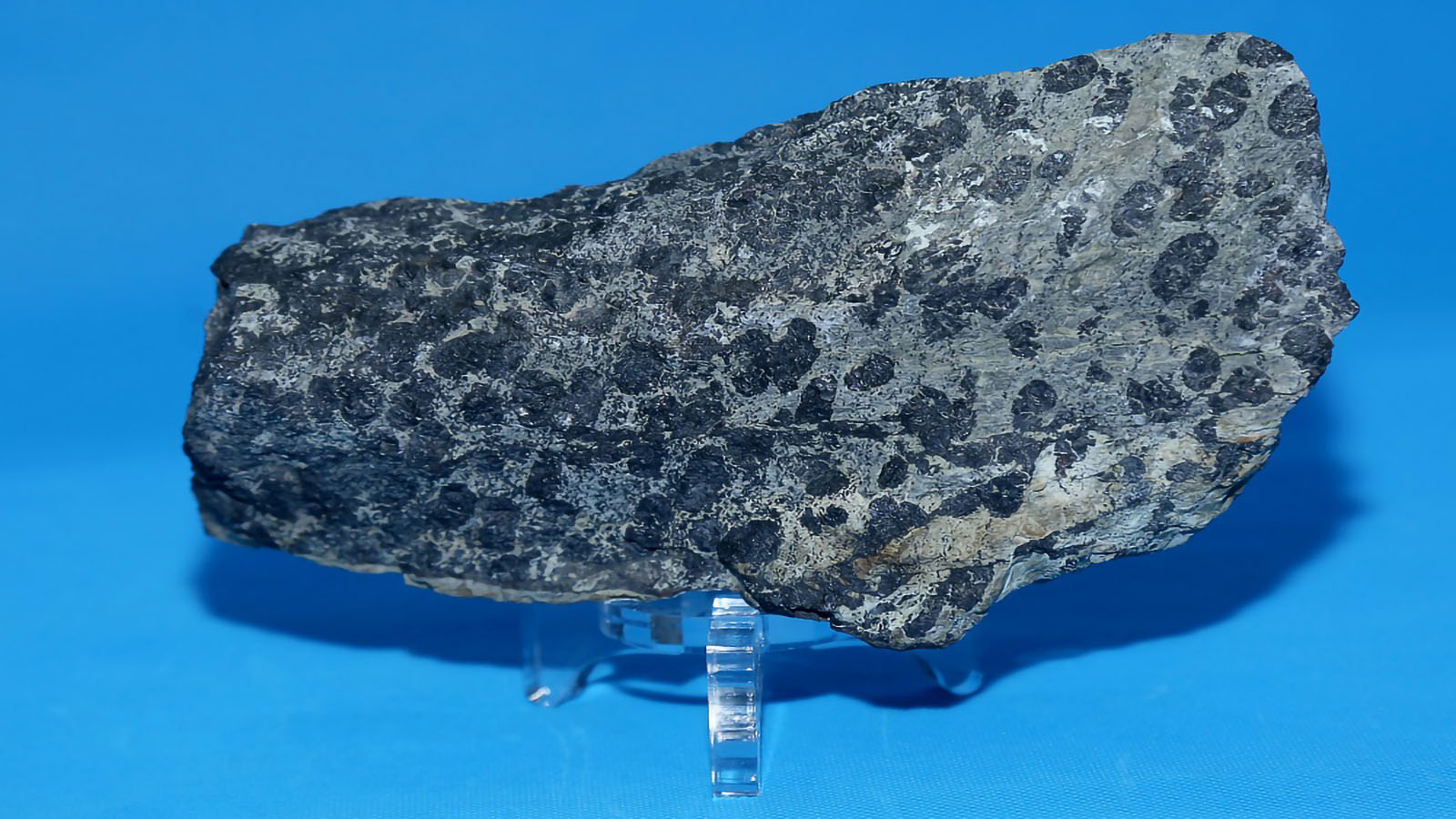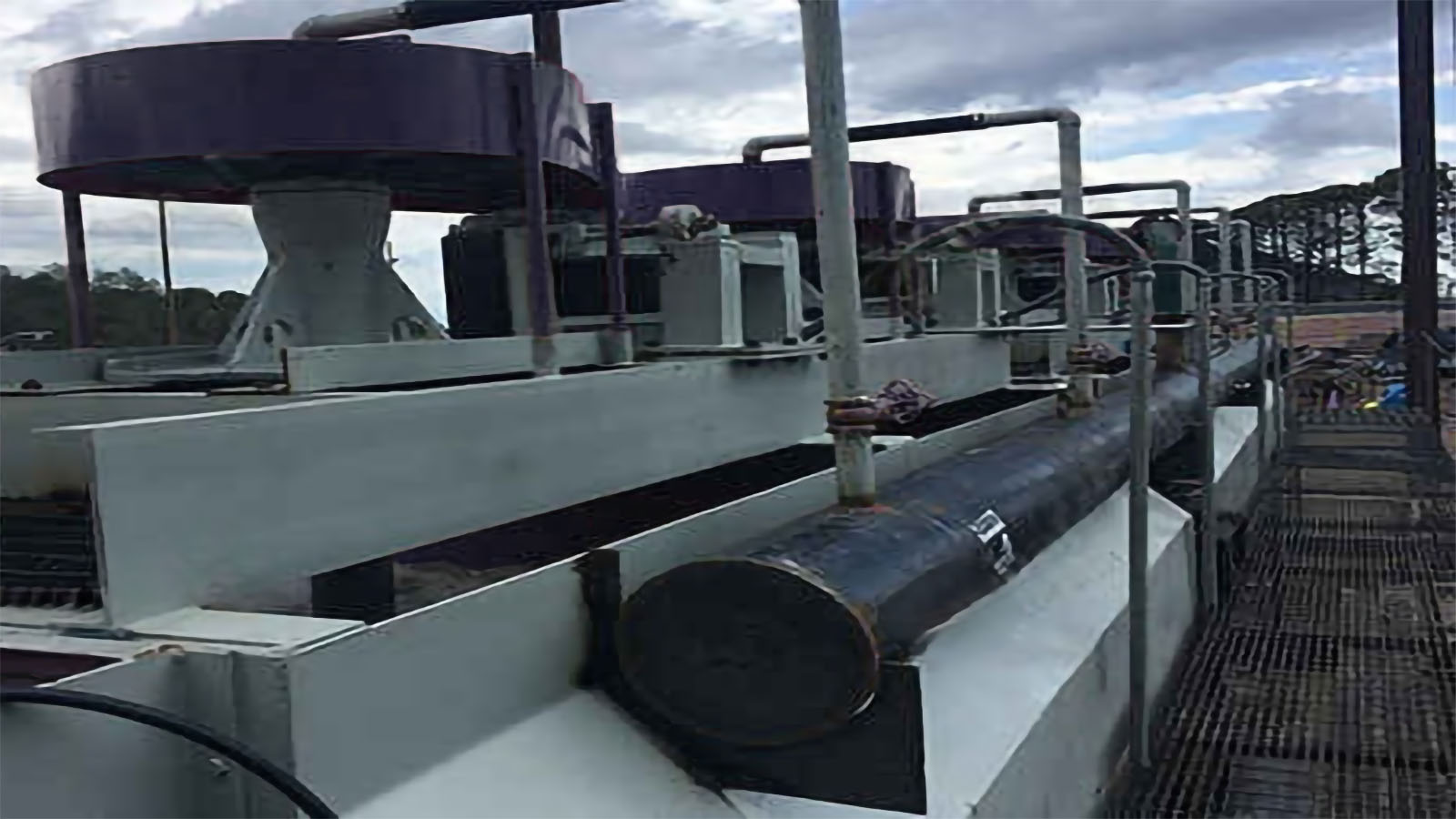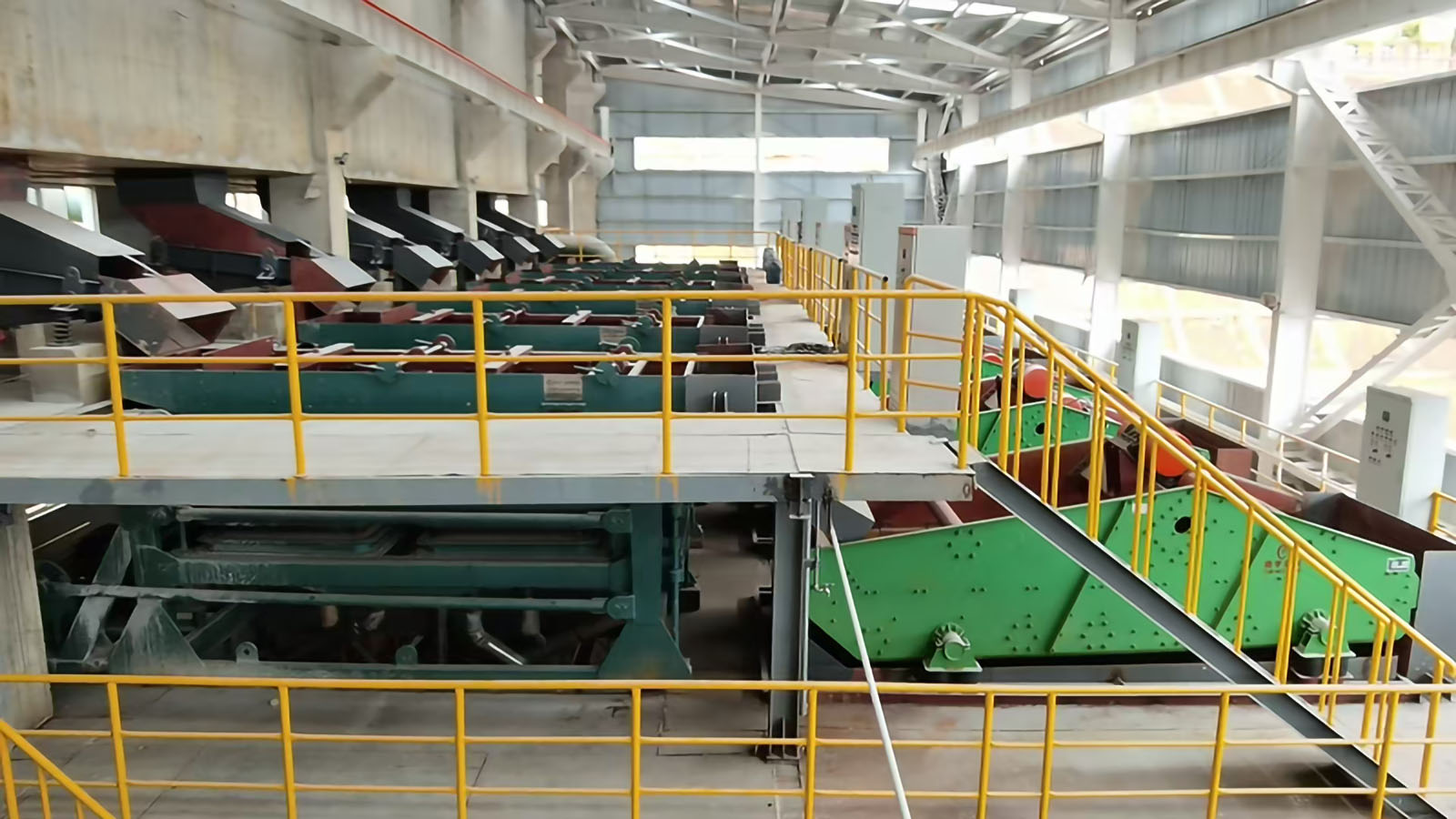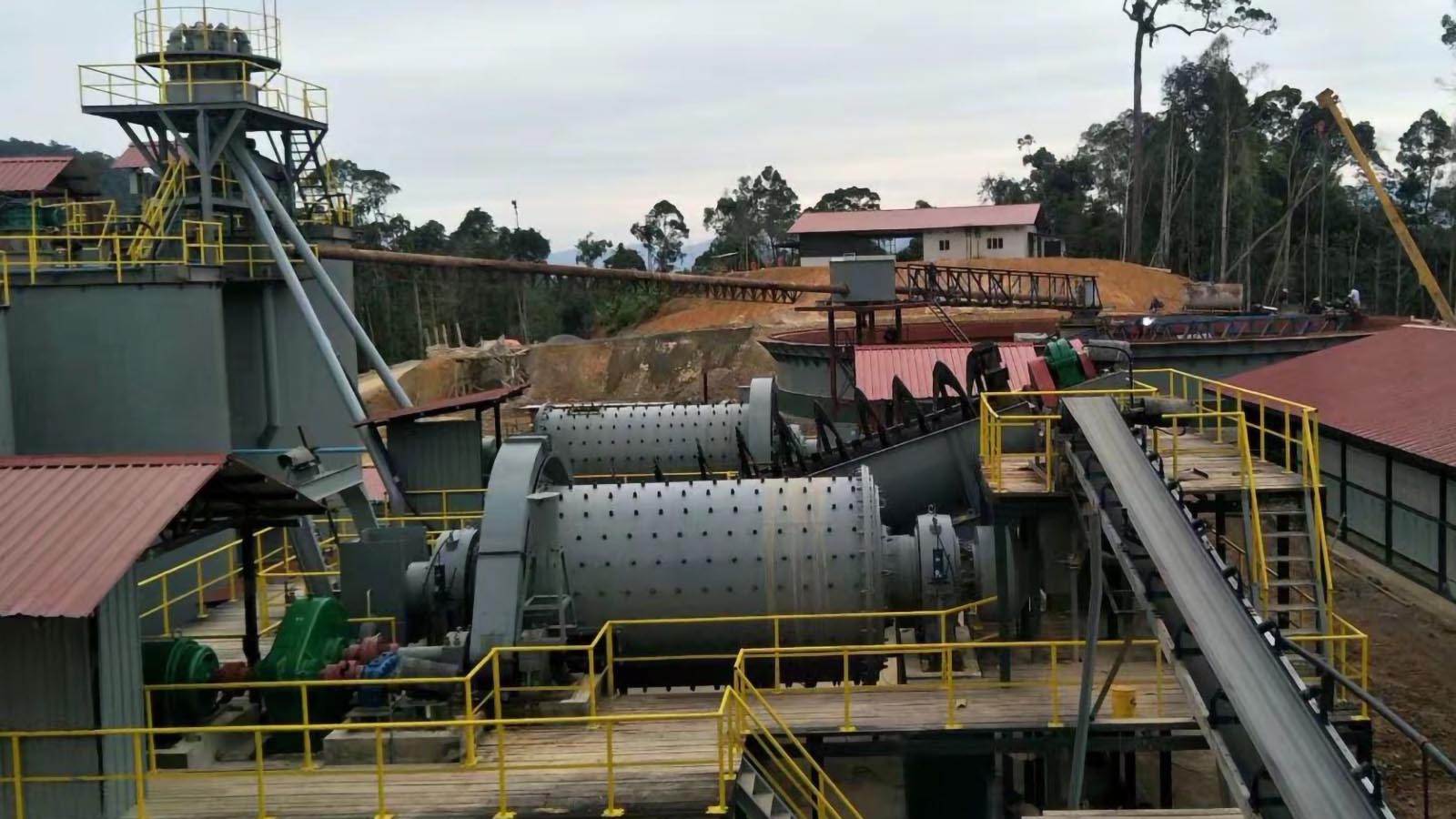
Chromite ore, as an irreplaceable strategic resource in the modern industrial system, holds critical application value across metallurgy, refractory materials, and chemical industries. With the rapid development of global high-end manufacturing, demand for chromite resources continues to rise. Deeply understanding its characteristics and mastering advanced beneficiation technologies is of significant importance for improving resource utilization efficiency. This article systematically introduces the physical properties, industrial applications, and current mainstream beneficiation technologies of chromite ore.
Mineralogical Characteristics and Composition of Chromite
Chromite belongs to the spinel mineral group, with a chemical formula represented as FeCr₂O₄. Under ideal conditions, chromium content can reach 46-55% (calculated as Cr₂O₃). In actual deposits, chromite typically exhibits the following characteristics:
- Physical Properties: Black to brownish-black color, metallic luster, Mohs hardness of approximately 5.5-7.5, density of 4.5-4.8 g/cm³, opaque
- Composition: Chromite is actually a collective term for a group of chrome spinel minerals, mainly including ferrichromite, magnesiochromite, chromite spinel, etc., commonly featuring mutual substitution of Mg²⁺, Al³⁺, Fe²⁺, Fe³⁺ ions, forming complex solid solutions
- Associated Minerals: Commonly coexists with serpentine, olivine, pyroxene, and other ultramafic rock minerals, sometimes accompanied by platinum group metal elements
From a metallurgical industry perspective, chromite quality primarily depends on the following indicators:
- Cr₂O₃ content: Industrial requirements typically exceed 40%
- Cr/Fe ratio: Influences the quality of ferrochrome alloys, with metallurgical-grade chromite requiring Cr/Fe ≥ 3:1
- Harmful impurity content: Low levels of elements such as sulfur, phosphorus, silicon, and calcium are required
Industrial Applications of Chromite
As the primary source of chromium, chromite has extensive and important applications in the modern industrial system:
1. Metallurgical IndustryThe metallurgical sector represents the largest market for chromite consumption, with primary applications including:
- Stainless Steel Production: Chromium is the most important alloying element in stainless steel, significantly enhancing corrosion resistance, heat resistance, and mechanical strength of steel materials. High-quality stainless steel typically contains 11-30% chromium, added primarily through high-carbon ferrochrome, medium-carbon ferrochrome, or low-carbon ferrochrome alloys
- Special Steel Manufacturing: Adding appropriate amounts of chromium in heat-resistant steel, bearing steel, spring steel, and other specialty steels significantly improves hardness, wear resistance, and hardenability
- Metallic Chromium Production: High-purity chromite can be used to produce metallic chromium for aerospace, military, and other high-end applications
2. Refractory MaterialsRefractory materials represent the second-largest application area for chromite:
- Chrome Refractory Bricks: Refractory materials manufactured directly from chromite, featuring excellent high-temperature resistance, corrosion resistance, and thermal shock resistance
- Chrome-Magnesia Bricks: Combining the advantages of chromite and magnesia, these offer superior refractory properties and are widely used in high-temperature furnace linings in steel, cement, and non-ferrous metal industries
- Special Ceramics: High-grade chromite can be used to produce specialty ceramic materials for aerospace, electronics, and other applications
3. Chemical IndustryIn the chemical industry, chromite serves as an important raw material for various chromium compounds:
- Chromate Production: Preparation of sodium dichromate, chromates, and other basic chromium compounds through alkaline fusion of chromite
- Pigment Manufacturing: Raw material for chrome yellow, chrome green, and other pigments
- Tanning Industry: Chromium salts are important tanning agents used in high-quality leather production
- Anti-corrosion Coatings: Chromium compounds have important applications in anti-corrosion coatings
Chromite Beneficiation Technology Systems
Due to the complexity and diversity of chromite, beneficiation processes must be customized according to ore characteristics. Current mainstream beneficiation methods can be divided into the following four categories:
1. Gravity Separation MethodGravity separation is the most traditional and widely applied method for processing chromite, primarily utilizing the density difference between chromite (4.5-4.8 g/cm³) and gangue minerals (2.5-3.5 g/cm³) for separation.
Main Equipment and Process Characteristics:
- Jigs: Suitable for processing medium to coarse-grained chromite with particle sizes of 0.5-30mm, offering advantages such as high processing capacity and simple operation. Under the action of pulsating water flow, minerals are stratified according to density, thereby separating chromite concentrate
- Shaking Tables: Particularly suitable for processing fine-grained chromite with particle sizes of 0.074-2mm, offering high separation precision and higher-grade concentrates, though with relatively lower processing capacity
- Spiral Concentrators: Suitable for processing chromite in the 0.1-2mm particle size range, featuring simple structure, convenient operation, and low cost
Application Effects and Limitations:
The effectiveness of gravity separation for chromite is highly influenced by ore properties, with key factors including:
- Natural chromite purity and Cr/Fe ratio
- Degree of liberation between chromite and gangue minerals
- Types and quantities of gangue minerals
In practical applications, gravity separation methods can typically upgrade raw ore from 25-35% Cr₂O₃ to 40-48% Cr₂O₃, with recovery rates reaching 80-90%. This method features low investment, low operating costs, and is suitable for large-scale industrial applications.
2. Magnetic Separation MethodChromite typically exhibits weak magnetic properties; therefore, magnetic separation often serves as an auxiliary process to gravity separation and is rarely applied independently.
Process Characteristics:
- Chromite has relatively low magnetic susceptibility, typically requiring high-intensity magnetic separators
- Magnetic separation effectiveness is influenced by differences in mineral magnetic susceptibility; for chromite ores associated with magnetite, weak magnetic separation can first be used to remove magnetite
- In processing gravity separation tailings or middlings, magnetic separation can serve as an effective recovery method
Typical Process Flow:
In chromite ore beneficiation practice, gravity-magnetic combined processes are common, first performing gravity separation to obtain preliminary concentrates, then using magnetic separation to further improve concentrate grade or to process gravity separation middlings and tailings to recover more chromite.
3. Flotation MethodFlotation is primarily used to process low-grade chromite with fine-grained dissemination, especially ultra-fine chromite resources that are difficult to effectively process through gravity separation.
Flotation Reagent Systems:
- Anionic Collectors: Traditional fatty acid collectors such as oleic acid and tall oil
- Cationic Collectors: Amine collectors such as dodecyl ammonium chloride
- Novel Collectors: N-oleyl aminomethyl morpholine chlorohydrin, diallyl methanol adducts of saccharic acid, etc., which can significantly improve selectivity
Key Points of Flotation Process:
The key to chromite flotation processes lies in pulp control and selective collection:
- Using Cationic Collectors: When floating in alkaline pulp, preliminary desliming is essential to reduce the adverse effects of slimes on flotation performance
- Using Anionic Collectors: In alkaline environments (pH 11.0-11.5), preliminary desliming may be unnecessary, but requires:
a) Using dispersants for thorough pulp dispersion
b) Adding selective flocculants to flocculate fine gangue particles
c) Preventing collector film formation on flocculated gangue mineral surfaces
With optimized flotation processes, low-grade chromite ore containing 26% Cr₂O₃ can be upgraded to 46% Cr₂O₃, with recovery rates reaching approximately 94%.
4. Chemical Beneficiation MethodsChemical beneficiation is primarily used to process complex, low-grade chromite that is difficult to concentrate, or to recover chromium resources from metallurgical slag.
Main Methods:
- Selective Leaching: Using specific solvents to selectively dissolve gangue or certain components in chromite
- Oxidation-Reduction Treatment: Changing the valence state of chromium through oxidation or reduction reactions to facilitate separation
- Fusion Separation: Achieving separation of chromite from gangue under high-temperature fusion conditions
- Sulfuric Acid Leaching: Using sulfuric acid to dissolve chromium in chromite, then recovering it from solution
- Reduction Roasting-Leaching Combined Process: First performing reduction roasting to alter mineral properties, then conducting leaching treatment
Application Characteristics:
Chemical beneficiation methods are technically complex, relatively costly, and have strict environmental requirements, primarily applied in the following situations:
- Processing complex, difficult-to-concentrate ores that conventional physical beneficiation methods cannot effectively handle
- Recovering chromium resources from low-grade (Cr₂O₃ < 20%) ores
- Extracting chromium from industrial slag
Selection and Development Trends of Chromite Beneficiation Processes
For different types of chromite resources, the Zexin Technical Team recommends selecting beneficiation processes based on the following factors:
- Ore Characteristics: Including chromite grade, Cr/Fe ratio, mineral dissemination patterns, and gangue composition
- Particle Size Distribution: Prioritizing gravity separation for coarse-grained ores; considering flotation or chemical methods for fine or ultra-fine grained ores
- Equipment Availability: Considering local equipment supply and technical conditions
- Economic Factors: Balancing investment scale, operating costs, and expected returns
- Environmental Factors: Particularly for chemical methods, considering environmental protection requirements and waste disposal
In practical industrial applications, combinations of multiple processes are often employed, such as gravity-flotation combined processes or gravity-magnetic separation combined processes, to maximize recovery rates and concentrate grades.
With increasingly scarce chromium resources and continuous development of beneficiation technologies, chromite beneficiation technology is evolving in the following directions:
- Intelligent Beneficiation Technology: Applying computer vision, artificial intelligence, and other technologies to optimize beneficiation process control
- Environmentally Friendly Beneficiation Processes: Developing green beneficiation technologies with low energy consumption and low emissions
- Low-Grade Resource Utilization: Developing more effective technologies for processing low-grade and complex chromite resources
- Tailings Reutilization: Developing comprehensive utilization technologies for chromite tailings to maximize resource utilization
In conclusion, as an indispensable strategic resource for modern industry, the development of efficient chromite beneficiation technology will be of significant importance for securing industrial chromium supply chains and promoting sustainable resource utilization. By selecting beneficiation processes suitable for ore characteristics and continuously optimizing technical parameters, chromite recovery rates and economic value can be significantly enhanced.
Related News

Efficient Recovery of Associated Silver from Lead-Zinc Sulfide Ores: Comparative Analysis of Eight Advanced Flotation Technologies

Optimizing Iron Ore Gravity Separation: Innovative Methods for Enhanced Efficiency and Recovery Rates
